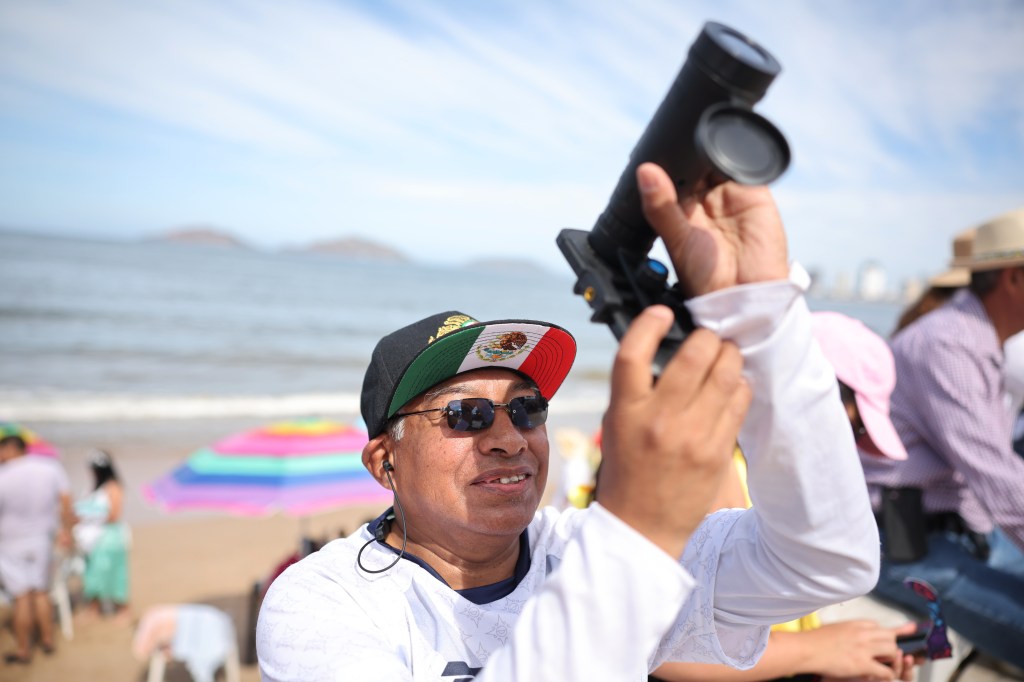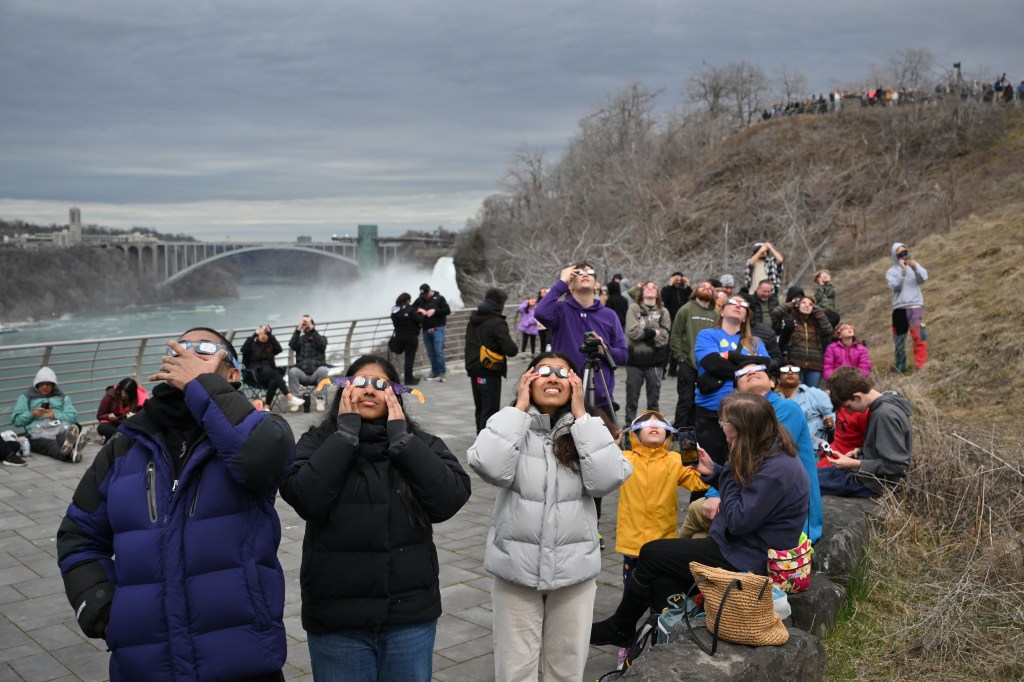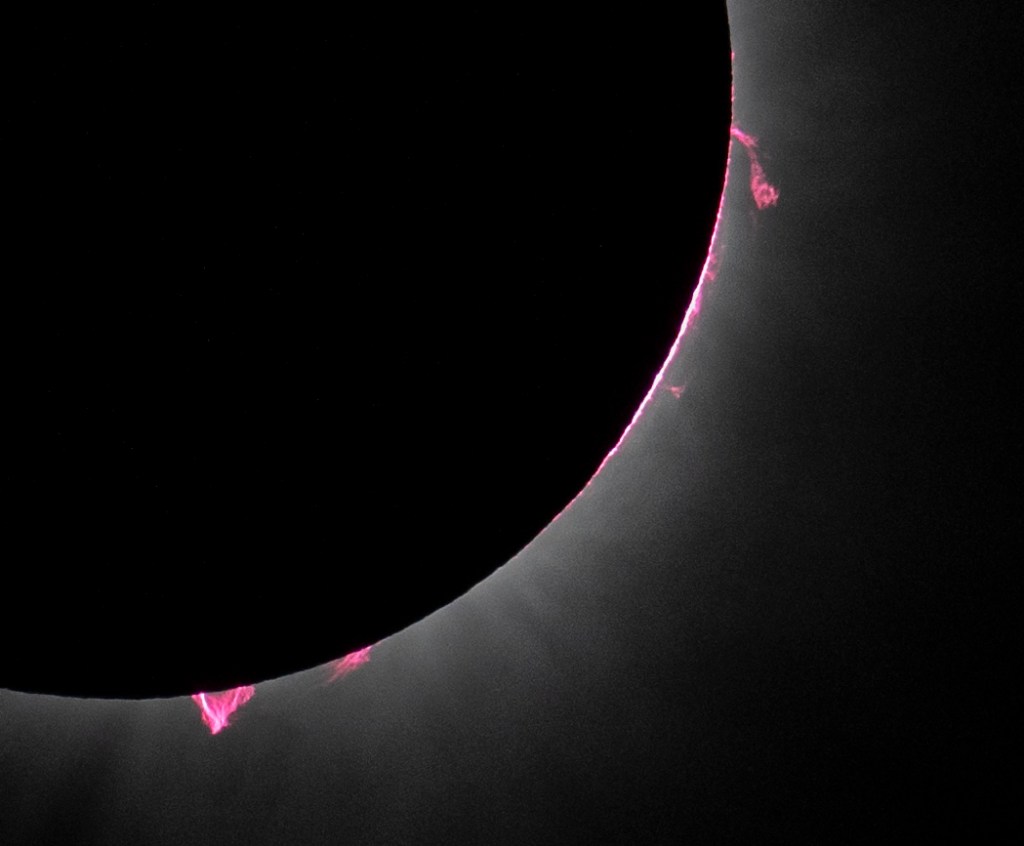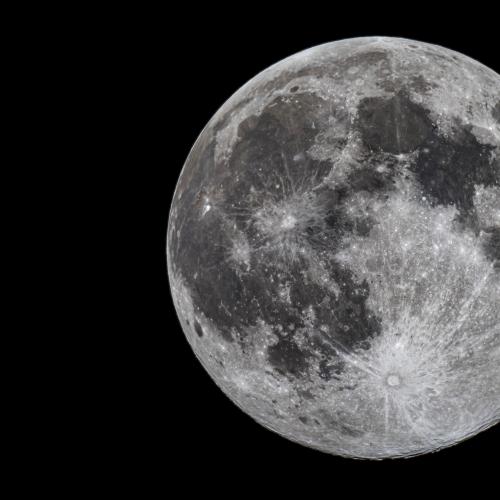A total solar eclipse captivated millions across a densely populated stretch of North America as the Moon entirely obscured the Sun for over four minutes in certain areas, but when will Australia get to witness one?
This year’s path of totality is 115 miles (185 kilometers) wide and home to nearly 32 million Americans, with an additional 150 million living less than 200 miles from the strip.
Weather permitting, the eclipse was visible along a trajectory commencing in Mexico, traversing the United States, and extending into Canada.

People watch the Great North American Eclipse on April 08, 2024 in Mazatlan, Mexico. (Photo by Hector Vivas/Getty Images)
In cities along the path of totality, such as San Antonio, Austin, and Dallas in Texas, as well as Indianapolis in Indiana, the eclipse spectacle drew huge crowds.
Niagara Falls, known for its cascading waters, became an eclipse hotspot as tourists flocked to witness the celestial event.

People look up at the sun during a total solar eclipse across North America, at Niagara Falls State Park in Niagara Falls, New York, on April 8, 2024. (Photo by ANGELA WEISS / AFP) (Photo by ANGELA WEISS/AFP via Getty Images)
US President Joe Biden, in a subtle jab at his predecessor, Donald Trump, reminded Americans to protect their eyes during the eclipse, underscoring safety precautions.
An eclipse is worth marveling at.
But don’t be silly, folks – play it safe and wear protective eyewear. pic.twitter.com/S6REAiZ735
— President Biden (@POTUS) April 8, 2024
Veterans of past eclipses described the moments preceding totality as eerie, with peculiar shadows and an abrupt dusk-like atmosphere. The “diamond ring effect,” visible just before totality, added to the celestial drama, leaving spectators awestruck by nature’s grand display.

In this NASA handout, prominences from the sun are shown during a total solar eclipse that swept across a narrow portion of the North American April 8, 2024 as seen from Dallas, Texas. (Photo by Keegan Barber/NASA via Getty Images)
Australians will need to wait a few years before we get to witness a total solar eclipse, with the next one due on July 22, 2028 and the best part is that most of the country will get to see it!











